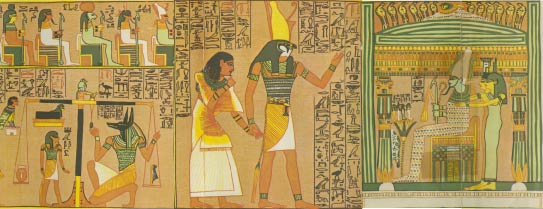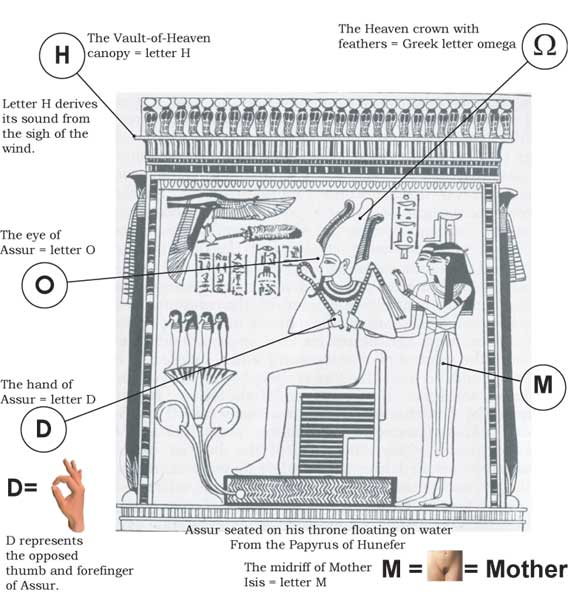
 ©
©

The Roman and Greek alphabets share a common source. They were both derived from the legend of Isis and Assur.

The classical Judgment Scene where Assur, the king of the afterlife and judge of the dead, renders the final judgment of a deceased person in a weighing of the heart ceremony.
The 'phonetic' theory of the alphabet is that writing began as crude pictures scratched in Sumerian clay tablets (about 3300 BCE?). Over time, those pictures evolved into more abstract cuneiform pictograms that were impressed in clay using a stylus. In further stages of development, some cuneiform pictograms evolved into a conventional set of phonograms that were used to represent sounds and not pictures. Through repeated usage, those phonograms eventually became the old Phoenician alphabet. Thus, the Phoenician alphabet progressed from picture-writing to alphabetic writing through evolutionary stages of development.
The conventional theory of the Roman alphabet is that Phoenician sailors transported the Phoenician alphabet to Greece in the course of commercial trade. The Greeks adapted the Phoenician alphabet to write the Greek language. The Phoenician alphabet that Greeks adapted to their language became the Greek alphabet. The Romans then 'borrowed' the Greek alphabet and adapted it to write Latin. Hence, the Roman alphabet is a set of abstract 'phonetic' symbols that evolved from the Phoenician alphabet.
The evolutionary development of the Phoenician alphabet from picture-writing to alphabetic writing is well founded. The presumption that the Roman alphabet evolved from the Phoenician alphabet is unfounded. The Roman alphabet did not evolve from the Phoenician alphabet nor from any form of picture-writing. The Roman alphabet is a set of Pagan religious icons derived from the legend of Isis and Assur. Most of the Majuscule letters of the Roman alphabet and the Greek alphabet were lifted directly from Egyptian art.

|
Reader responses are invited. |
Return to Home Page . . . Return to Table of Contents Hub
Links to related alphabet pages:
D O H M For Greek Omega see Alphabet Page G